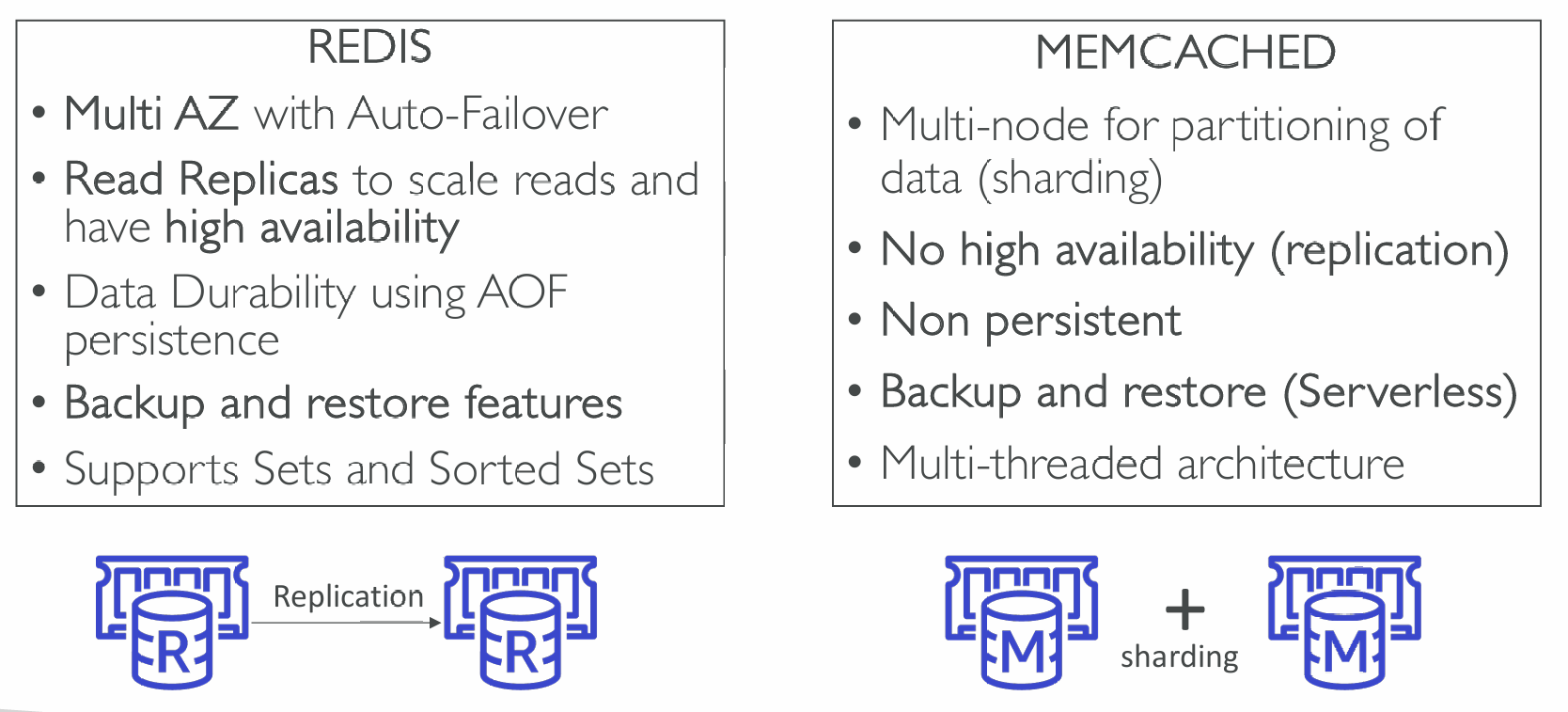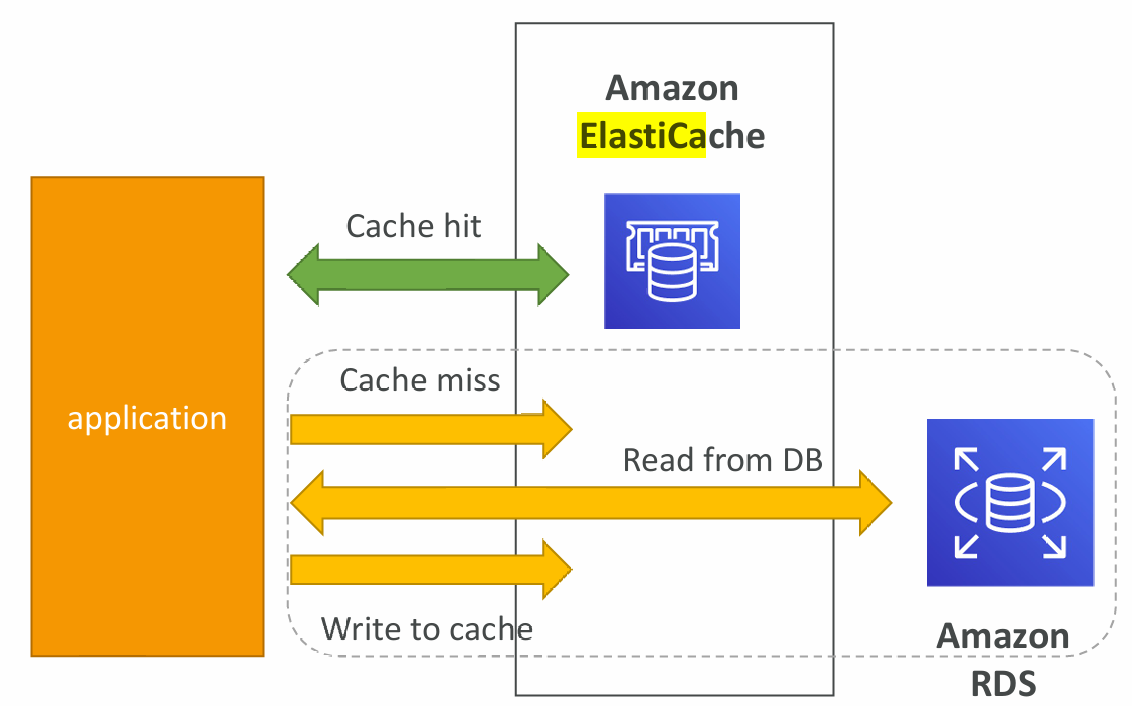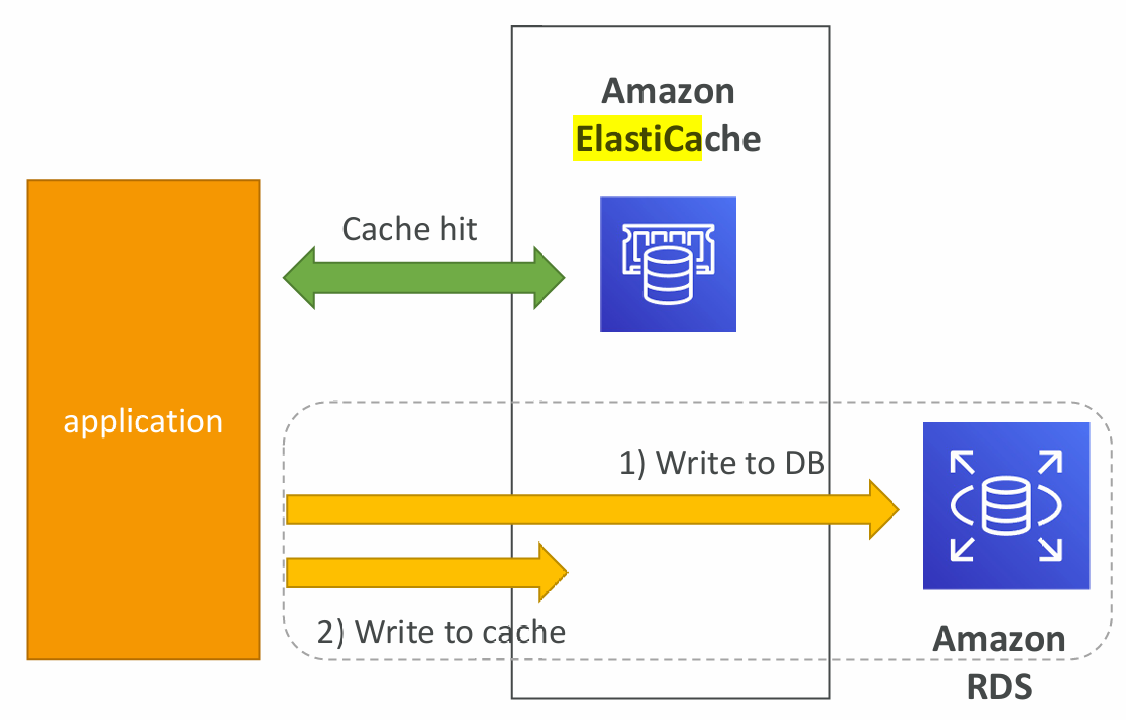ElastiCache
- ElastiCache is a managed Valkey-/Memcached-/Redis data store
- A cache is an in-memory database with really high performance, low latency
- Helps reduce load off of databases for read intensive workloads
- Helps make your application stateless
- AWS takes care of OS maintenance / patching, optimizations, setup, configuration, monitoring, failure recovery and backups
- Using ElastiCache involves heavy application code changes
Solution Architecture
ElastiCache can be used for different goals. Let's look at two of them.
DB Cache
- Applications queries ElastiCache, if not available, get from RDS and store in ElastiCache
- Helps relieve load in RDS
- Cache must have an invalidation strategy to make sure only the most current data is used in there.
User Session Store
- User logs into any of the application
- The application writes the session data into ElastiCache
- The user hits another instance of our application
- The instance retrieves the data and the user is already logged in

Redis vs Memcached

Caching Implementation Considerations
- Is it safe to cache data?
- Data may be out of date, eventually consistent
- Is caching effective for that data?
- Pattern: data changing slowly, few keys are frequently needed
- Anti patterns: data changing rapidly, all large key space frequently needed
- Is data structured well for caching?
- Example: key value caching, or caching of aggregations results
- Which caching design pattern is the most appropriate?
Lazy Loading / Cache-Aside / Lazy Population

- Pros
- Only requested data is cached (the cache isn’t filled up with unused data)
- Node failures are not fatal (just increased latency to warm the cache)
- Cons
- Cache miss penalty that results in 3 round trips, noticeable delay for that request
- Stale data: data can be updated in the database and outdated in the cache
Lazy Loading / Cache aside is easy to implement and works for many situations as a foundation, especially on the read side.
Write Through – Add or Update cache when database is updated

- Pros
- Data in cache is never stale, reads are quick
- Write penalty vs Read penalty (each write requires 2 calls)
- Cons:
- Missing Data until it is added / updated in the DB. Mitigation is to implement Lazy Loading strategy as well
- Cache churn – a lot of the data will never be read
Write-through is usually combined with Lazy Loading as targeted for the queries or workloads that benefit from this optimization.
Cache Evictions and Time-to-live (TTL)
- Cache eviction can occur in three ways:
- You delete the item explicitly in the cache
- Item is evicted because the memory is full and it’s not recently used (LRU)
- You set an item time-to-live (or TTL)
- TTL are helpful for any kind of data:
- Leaderboards
- Comments
- Activity streams
- TTL can range from few seconds to hours or days
- If too many evictions happen due to memory, you should scale up or out
Setting a TTL is usually not a bad idea, except when you’re using Write through. Set it to a sensible value for your application.
Amazon MemoryDB for Redis
- Redis-compatible, durable, in-memory database service
- Ultra-fast performance with over 160 millions requests/second
- Durable in-memory data storage with Multi-AZ transactional log
- Scale seamlessly from 10s GBs to 100s TBs of storage
- Use cases: web and mobile apps, online gaming, media streaming, ...
